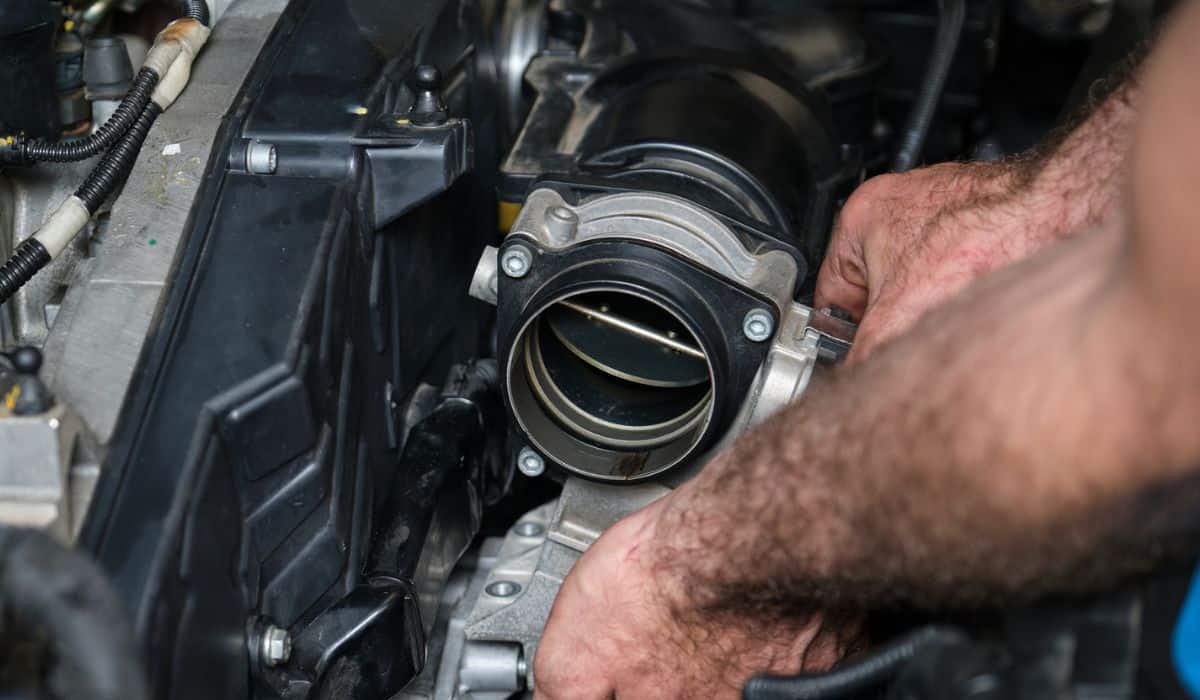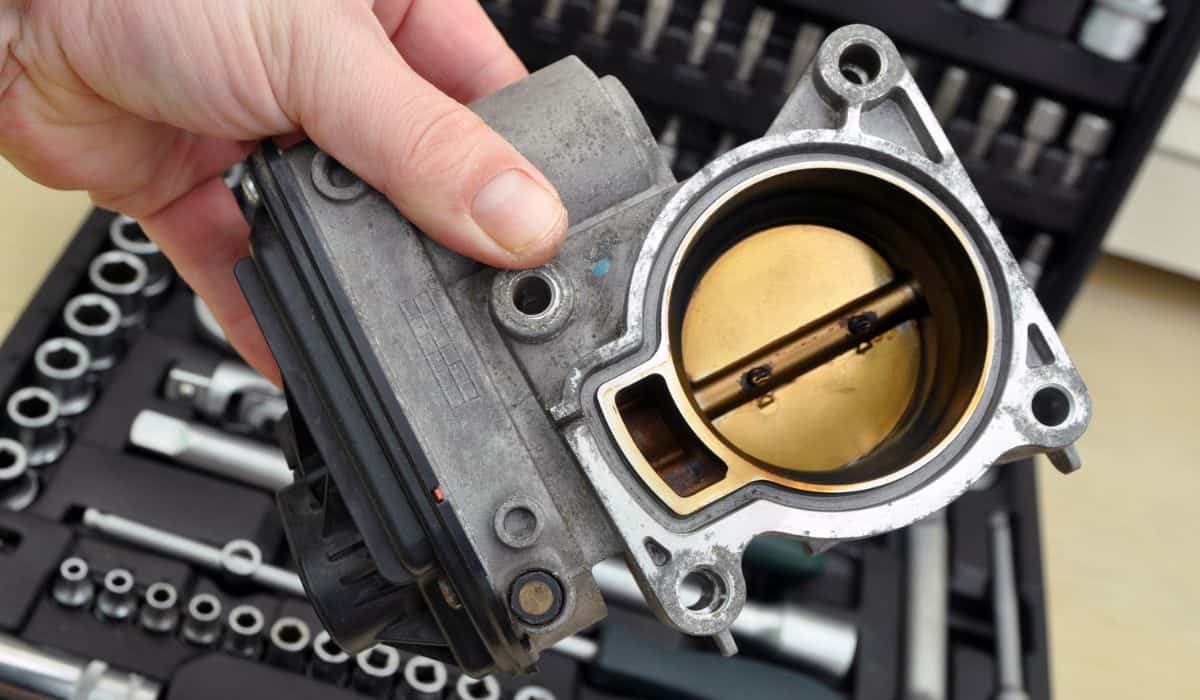Throttle Body Spacers: What Are They and Do You Need One?
You might have heard claims that throttle body spacers improve the fuel economy of your vehicle’s engine. But what is a throttle body spacer, and is there truth to these claims? Is installing one even worth your time?
For ~$100, a throttle body spacer can increase the horsepower, torque, and fuel economy of your vehicle. It does this by increasing the volume of air involved in the combustion taking place in the engine. Spacers can also help increase gas mileage, but they aren’t appropriate for every vehicle.
Installing a spacer is one way you can lower your fuel consumption. But because a spacer’s ability to increase your gas mileage depends on what type of vehicle you have, it’s important to understand their function and design. Let’s take a more detailed look at how throttle body spaces work and the potential advantages of using them.
What is a Throttle Body Spacer?

To understand what a throttle body spacer is, you need to know what a throttle body does. In vehicles with fuel-injected engines, the throttle body is typically located between the air intake filter and the intake (or inlet) manifold, which distributes air to the cylinders. The throttle body houses a valve that controls the amount of air going into the engine and is in turn controlled by the gas pedal.
When air mixes with fuel from the engine in the combustion chamber, combustion occurs. This process is ignited by a spark through the spark plug, and it releases energy that goes into making the engine run.
The amount of air going into the combustion chamber is critical for the amount of energy produced, and therefore, the throttle body has an important function in your car.
So, what does a throttle body spacer do?
The throttle body spacer is a small circular metal part installed between the throttle body and the air intake manifold. It increases the length of the intake manifold and increases the air surface volume going in. This helps your engine by making it easier to combine air and fuel.
Your vehicle’s engine needs oxygen to run just like you do, so you can think of a throttle body spacer as a tool that increases its capacity to breathe.
Throttle body spacers don’t come with your vehicle and need to be installed manually. They are designed to add to the horsepower and torque while also improving fuel efficiency. As a result, without increasing the amount of fuel or adding any other input, you can generate more power from the engine by increasing the volume of air.
Most throttle body spacers can be categorized into two types. One has a smooth inner surface, while the other has a ridged one. Some people claim that the ridged surface creates a turbulence effect on the air flowing in, helping the spacer perform better.
However, the smooth throttle body spacer is also effective as it ensures a smoother inflow of air.
Are Throttle Body Spacers Effective?
You may have come across mixed reviews about the efficiency of throttle body spacers. While some people insist that they are a myth, others believe they work.
So what’s the truth? Are they a scam, or are they really effective?
While the design of the spacer and the science behind it isn’t a myth, whether or not it is effective depends on the type of vehicle you have. If your engine is already designed to be fuel efficient, the difference a throttle body spacer makes will likely be negligible.
For example, if the intake manifold in your car is long (which isn’t the case for most vehicles), it basically functions the same way as one with a spacer. A longer intake manifold increases the air volume and rate of combustion and helps your engine generate more power.
In that case, if you were to add a spacer to this already efficient system, the effect would be minimal.
A multi-port fuel injection system also functions to increase the surface volume of air. Cars who have this injection system also won’t benefit from adding a spacer.
Throttle body spacers work best for single-port fuel injection system vehicles and those that use a carburetor. You can expect an increase of 7 to 15 horsepower and 15 to 125 ft lbs torque on average through a throttle body spacer.
When it comes to which shape of the throttle body spacer is more efficient, there’s no significant difference between the two. The argument for the rigid spacers is that the ridges create a whirling effect on the air, which increases the surface volume and hence improves the rate of combustion.
Smooth-surface-shaped spacers are, on the other hand, seemingly more effective because they allow a greater inflow of air.
However, neither is significantly more efficient than the other.
How Much Do Throttle Body Spacers Cost?
While a throttle body spacer isn’t essential for your vehicle, it’s an inexpensive investment to save on fuel costs. You can get one for between about $40 to $160, depending on the type of spacer and its design.
The exact cost depends on the type of engine your vehicle has and the quality of the spacer you want. For example, aluminum spacers are cheaper than polyurethane ones, but don’t perform as well.
Because spacers are already inexpensive, it’s best to choose a higher-quality one to avoid damaging your vehicle.
Do Throttle Body Spacers Increase Gas Mileage?

Throttle body spacers are designed to increase the fuel efficiency or gas mileage of your vehicle. They do so by increasing the air intake in the fuel combustion process, which will allow your vehicle to cover more miles with less fuel.
How much fuel you can save depends on the previous throttle system and whether you have a fuel-efficient vehicle. You won’t notice much difference in gas mileage if you have a hybrid vehicle or if it already has a fuel-efficient design.
However, if you install a throttle body spacer on a 4X4, Jeep, truck, or older vehicle with poor gas mileage, the gas mileage will significantly improve.
While a throttle body spacer will improve your vehicle’s gas mileage, it’s not going to magically reduce gas consumption by a significant amount, so don’t get your hopes up too high.
How Do You Install a Throttle Body Spacer?
Installing a throttle body spacer is simple and doesn’t require a the help of a mechanic if you have basic DIY knowledge. While the specific steps for installation might differ slightly depending on the type of spacer and vehicle, here’s a basic rundown of the process:
- Start by choosing the right throttle body spacer by checking which type fits in your vehicle. Don’t be tempted to install one that’s too big, as it may decrease the engine’s power and fuel efficiency. You can consult a professional or ask your local spare parts store about what type of spacer suits your vehicle best.
- Get your toolbox out. While you’ll only need a screwdriver in most cases, it’s best to have everything on hand.
- As a safety measure, disconnect the electricity by disconnecting the negative battery cable.
- Remove the engine cover and take out the intake tube.
- Remove the throttle body by unscrewing it from the intake manifold, and set it aside.
- Refer to the spacer’s instructions to determine which end to connect to the manifold and which to the throttle body.
- Connect the throttle body to the spacer and the intake tube to the throttle body. Replace the engine cover and tighten the bolts. Make sure that these parts are appropriately spaced and not touching each other.
- Reconnect the battery and start your engine.
- Let the engine run warm, then turn it off. Check for oil or fuel leakage and loose bolts.
As gas prices rise, it’s worth your time to find innovative ways to reduce your fuel consumption.
However, do check if your vehicle’s engine is already at its optimal level of performance before you install a spacer. And keep in mind that while a throttle body spacer may help improve your vehicle’s gas mileage, it’s not a silver bullet.
